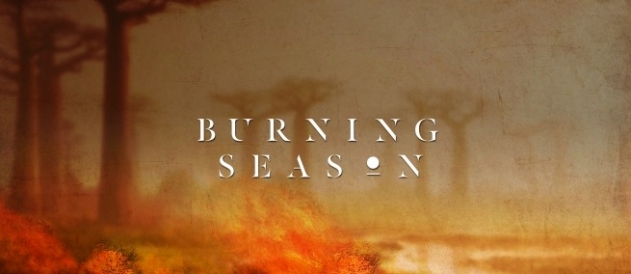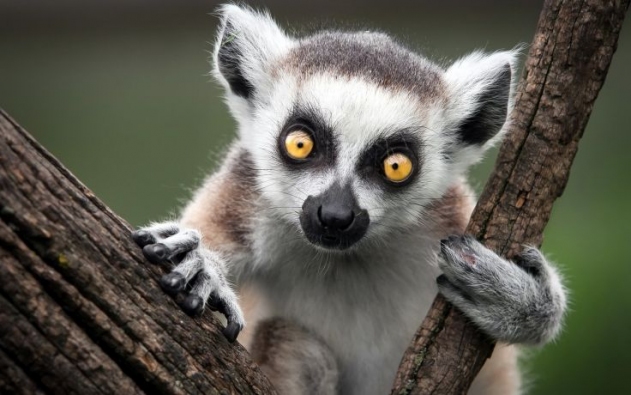
Jenny Halper is one of two filmmakers who received $75,000 from the Tribeca Film Institute-Sloan Filmmaker Fund to support the development of her feature film script, THE BURNING SEASON. The film is a drama based around a mother-daughter story set in Madagascar; the mother is a primatologist driven to save a local lemur species whose teenage daughter is grappling with what she wants for her own path in life. THE BURNING SEASON was adapted from a short story, “What the World Will Look Like When All the Water Leaves Us,” by Laura Van Den Berg, with whom Jenny Halper went to graduate school at Emerson College.
The film is led by a team of women; Emmy nominated producer Kate Sharp has worked on films such as MADAME BOVARY, and director Claire McCarthy has made THE WAITING CITY and THE TURNING. Dr. Patricia Wright is a Primatologist and Professor of Anthropology at Stony Brook who is serving as the film’s scientific advisor. Writer and producer Jenny Halper is based in New York, where she works at Maven Pictures. She came to the Museum of the Moving Image to speak with Science & Film about THE BURNING SEASON.
Science & Film: Can you talk about the process of adapting the film, and what some of the major challenges were?
Jenny Halper: I love adaptations. I was really interested in Madagascar and in creating a great role for an actress. I don’t think there are a lot of roles for women, especially over 30 or 40. I certainly don’t find that a lot of great roles come across my desk as a film executive. In any case I thought about the story for a long time and ultimately said, I’m just going to email Laura and see if she’ll let me option it, and she did. I had scenes in my head that weren’t necessarily in the story that I wanted to write. I read the story many times, took notes, and put it away. I started doing a lot of research on Madagascar, and I met with Dr. Patricia Wright, who is a consultant on the movie and is known worldwide for her work on lemurs. Another challenge was incorporating the research and making it interesting and dramatic, and creating forward momentum in a story which is really about characters interacting, and subtext, and in which the plot is driven by the June character’s passion for science. The script won an award at the Athena Film Festival, and my producing partner Kate [Sharp] came on board, and we worked to make the script more structurally sound and also talked in depth to Dr. Wright and other experts and native Malagasy. Kate was instrumental in getting the script to the next level and has a background in international co-productions and a really incredible energy and skill set.
In terms of the filmmaking process, we had to find a director who was the right fit. We were very, very lucky with Claire [McCarthy]. Kate and I saw her movie THE WAITING CITY, which was the first Australian film shot completely on location in India and made that place a really beautiful and vivid character in and of itself. That was what we were looking for. Also, she was so tuned in to the nuances of relationships and subtext, which was also what we were looking for. Her movies have phenomenal performances. When we met her and talked with her, it was just completely clear that she understood the story we were trying to tell and had an amazing eye and gift for working with actors. We didn’t need to look for anyone else.
We did a staged reading at the Athena Film Festival at Barnard where the script won its first award, and we got Hope Davis (THE SECRET LIVES OF DENTISTS) to read June, and Gbenga Akkinagbe (THE WIRE) to read Daud, the PhD student, and Elena Kampouris (MEN, WOMEN, AND CHILDREN) read Celia, the daughter, and Laila Robins (HOMELAND) to read the missionary character. Claire had just 45 minutes with them, and it was incredible to watch them work. We could vividly see what the movie could be.
S&F: Were you interested in making a mother-daughter story in particular?
JH: I am completely obsessed by mother-daughter stories.
S&F: What are some of your favorite stories?
JH: One of my favorite movies of all time is TERMS OF ENDEARMENT, and when we first spoke to Claire she brought up TERMS OF ENDEARMENT and OUT OF AFRICA. I really love the Elizabeth Strout book Amy and Isabelle—I think that is a really beautiful and heartbreaking mother-daughter story. There are not a ton of great mother-daughter stories in movies. Maybe I’m missing some…STEEL MAGNOLIAS is one. There is a Nora Ephron movie called THIS IS MY LIFE that is based on a Meg Wolitzer novel, This is Your Life, which I loved when I was a kid. There is this play The Effect of Gamma Rays on Man-in-the-Moon Marigolds, that had a big impact on me; I used to do a lot of theater and I worked on that play. It is about a very complicated mother-daughter relationship. I think it influenced me in a big way. The other one is The Glass Menagerie, which is probably my favorite play. There is a film version that is beautiful.
S&F: How did you get connected with Dr. Patricia Wright?
JH: I had a friend who was at school at Stony Brook University and Pat Wright happened to be on the faculty there, so she put us in touch. It was pretty serendipitous. Coincidentally, one of my other close friends knew a filmmaker who grew up in Madagascar. His dad was a missionary and epidemiologist, and he and his father had also known Pat Wright.

S&F: Are you going to film real lemurs?
JH: We want to. We plan to shoot most of the film in South Africa and then a portion in Madagascar to film the lemurs and exteriors you can't double, like the capitol, Antananarivo, which is a former French Colony and has a very specific look. There does happen to be a lemur center at Duke University in North Carolina, so we’re hoping to go there and do more research, probably when we have our lead actress on board. There is a lemur exhibit at the Bronx Zoo and Claire and Kate and I were able to see live lemurs, which was pretty incredible. Watching them in action is so different than watching videos online—they move like humans, and the different species are so incredibly distinct from one another. It’s really amazing.
We have talked about having our lead actress work with the lemurs, and filming her verité style, just shoot and see what happens. I think that with Claire directing, there are so many things we could do to make the script more than what is on the page.
S&F: Who do you envision being the lead actors?
JH: The main character is a complicated part to cast, because she is not necessarily a likeable character, but she needs to be extremely charismatic and really somebody who you would want to follow–and also be quite harsh, and also not be such a great mom, and also have this tremendous vulnerability. You also need somebody who is a recognizable name.
S&F: How will the $75,000 grant be used?
JH: You get the funds in three stages. The very last stage is when the film is green lit. We have a First Assistant Director which means we can get a schedule done and get a sense of: is it feasible to shoot 30 days in South Africa and still have five days in Madagascar? Do I need to make revisions to the script to allow for budgetary constraints? For example, there is a scene with the Baobab trees, which are actually quite far from the capitol, so if we want to shoot in both places we would extend the shoot by x number of days, so then the budget goes up. We are looking at bringing on a casting director. There are fees for script development so the grant will help. We are looking at scouting locations and also potentially doing a bit of rewriting based on location.
THE BURNING SEASON plans to start shooting in 2017. Past winners of the Tribeca Sloan Filmmaker Fund award include THE IMITATION GAME and EXPERIMENTER, which was released into theatres in 2015 and whose director, Michael Almereyda, was interviewed on Science & Film.
FILMMAKERS
PARTNERS
TOPICS